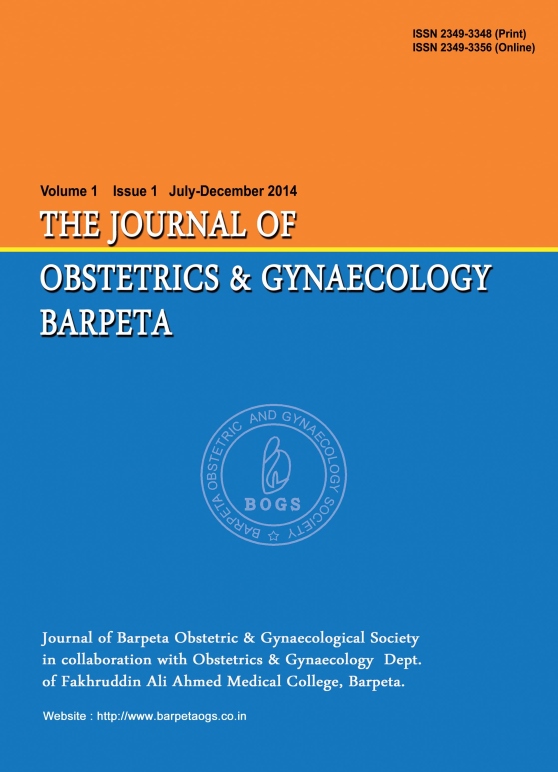
The New Indian Journal of OBGYN. Epub Ahead of Print
A study of association of uric acid with the development of gestational diabetes mellitus
Neeraj Sharma, Shweta Jha, Seema Pundir, Chandan Sahu
ABSTRACT
Objectives: To evaluate the value of serum uric acid in early pregnancy to predict the development of gestational diabetes mellitus (GDM). Methods: This prospective observational cohort study included 336 women in their first trimester of pregnancy (<13 weeks of gestation). Uric acid was measured using colorimetric assay with a detection limit of 10 mg/dl. GDM was diagnosed using DIPSI recommended method at 24-28 weeks of gestation. The primary outcome of the study was the association of serum uric acid levels with occurrence of GDM and secondary outcomes were the correlation of age, body mass index (BMI), and high risk factors with the development of GDM. P - value <0.05 was considered statistically significant. Results: Total 336 antenatal women were studied. Most were in 21-25 years age group (51.49%), primigravida (65.18%) and had BMI <25kg/m2 (86.01%). High-risk factors were present in 40(11.9%) patients. Serum uric acid level was >3.5 mg/dl in 54 (16.07%) participants. The prevalence of GDM was 27(7.71%) among which 24 cases had higher serum uric acid. Higher age carried a significantly higher odds of occurrence of GDM with odds ratio of 8.125 (P=0.0004). Presence of higher-risk factors and increased uric acid carried significantly higher odds of 11.722 and 74.4, respectively for occurrence of GDM (P<0.0001). ROC curve showed that serum uric acid level with a criteria of >3.5 carried a sensitivity of 88.9% and specificity of 90.3% for predicting GDM. Conclusion: Antenatal women without the known high-risk factors of DM developed GDM when the serum uric acid level was > 3.5 mg/dl. In conclusion, higher serum uric acid levels in the early pregnancy can serve as a novel marker for predicting the development of GDM.
Volume 1 Issue 2
Volume 2 Issue 1
Volume 2 Issue 2
Volume 3 Issue 1
Volume 3 Issue 2
Volume 4 Issue 1
Volume 4 Issue 2
Volume 5 Issue 1
Volume 5 Issue 2
Volume 6 Issue 1
Volume 6 Issue 2
Volume 7 Issue 1
Volume 7 Issue 2
Volume 8 Issue 1
Volume 8 Issue 2
Volume 9 Issue 1
Volume 9 Issue 2
Volume 10 Issue 1
Volume 10 Issue 2

